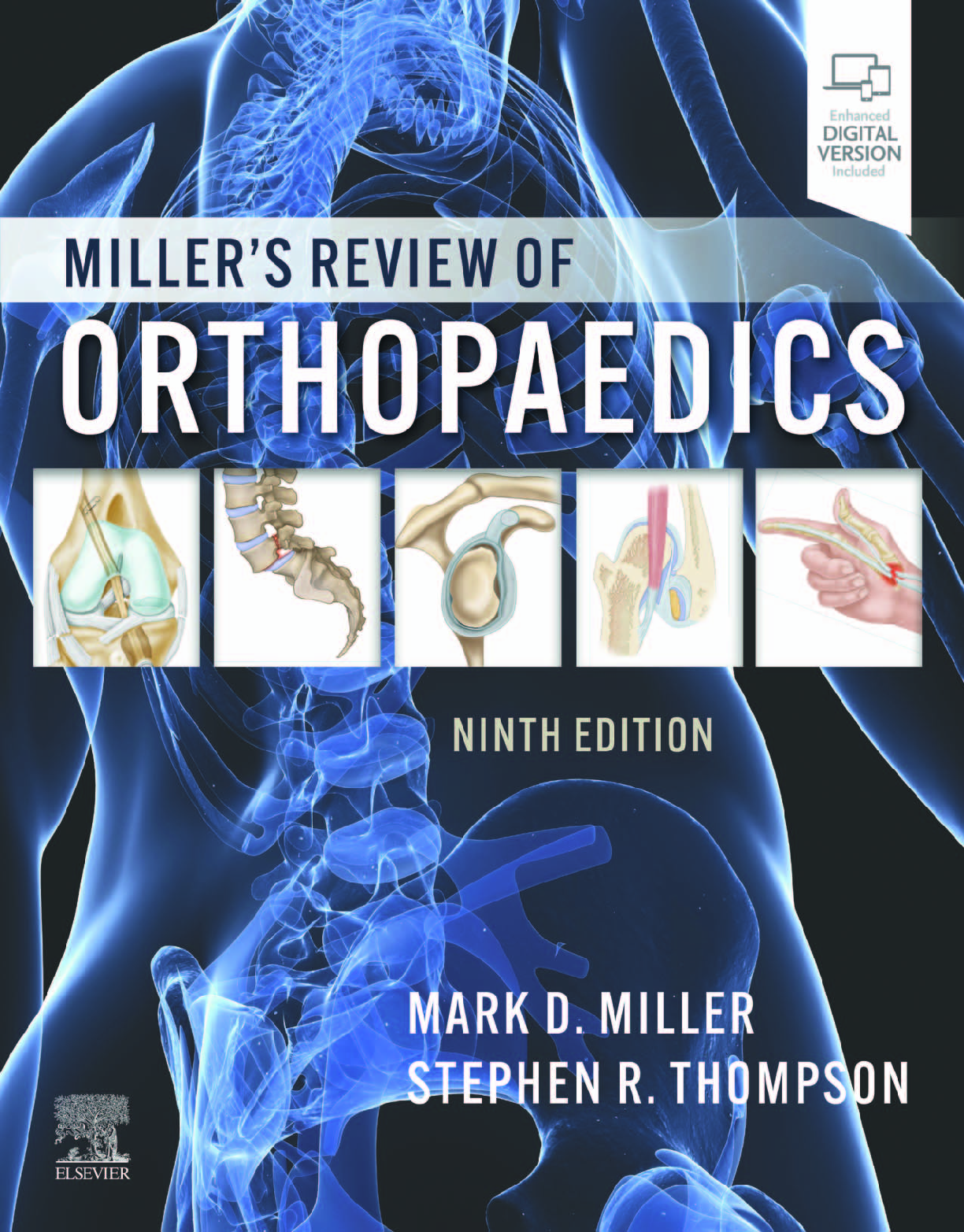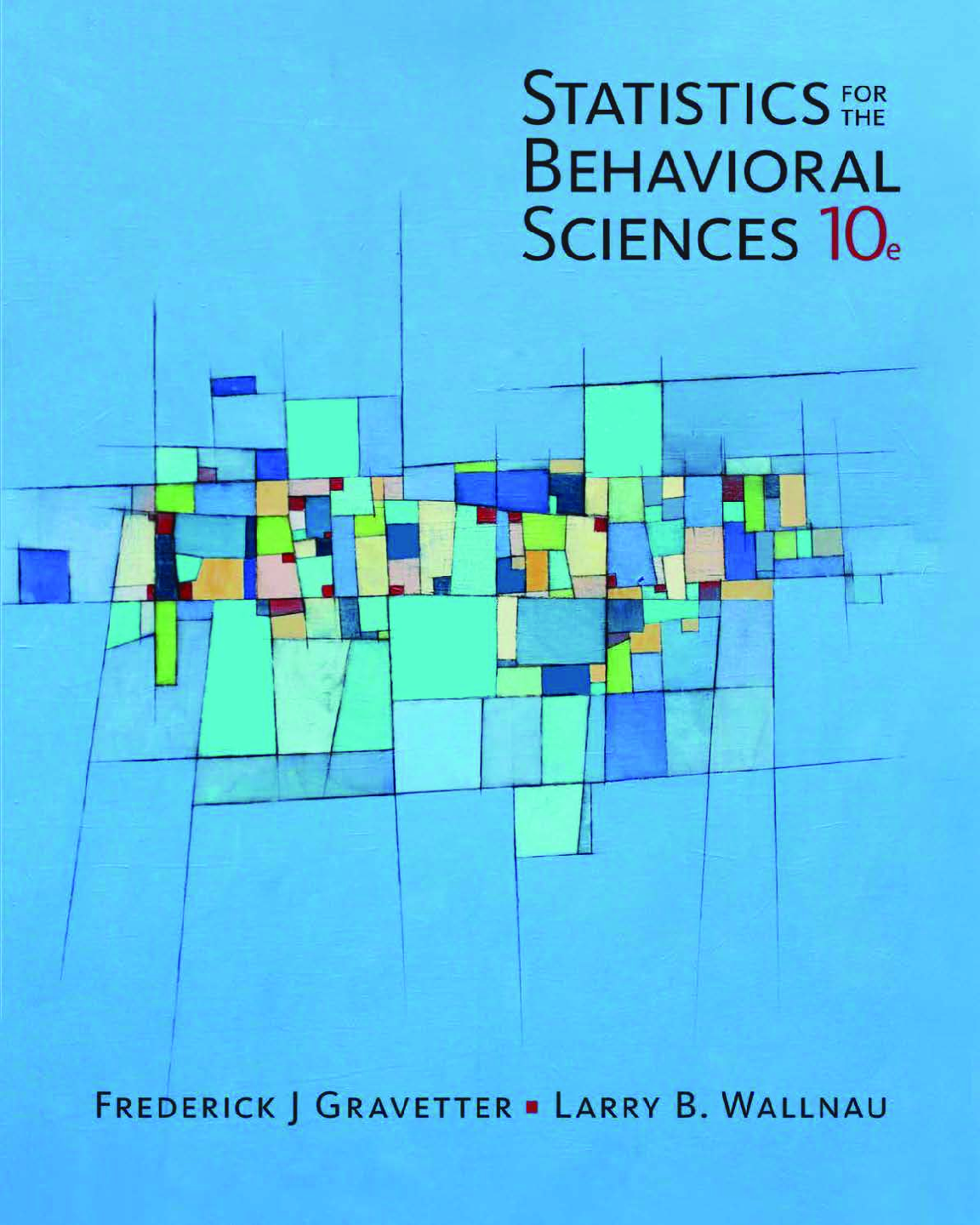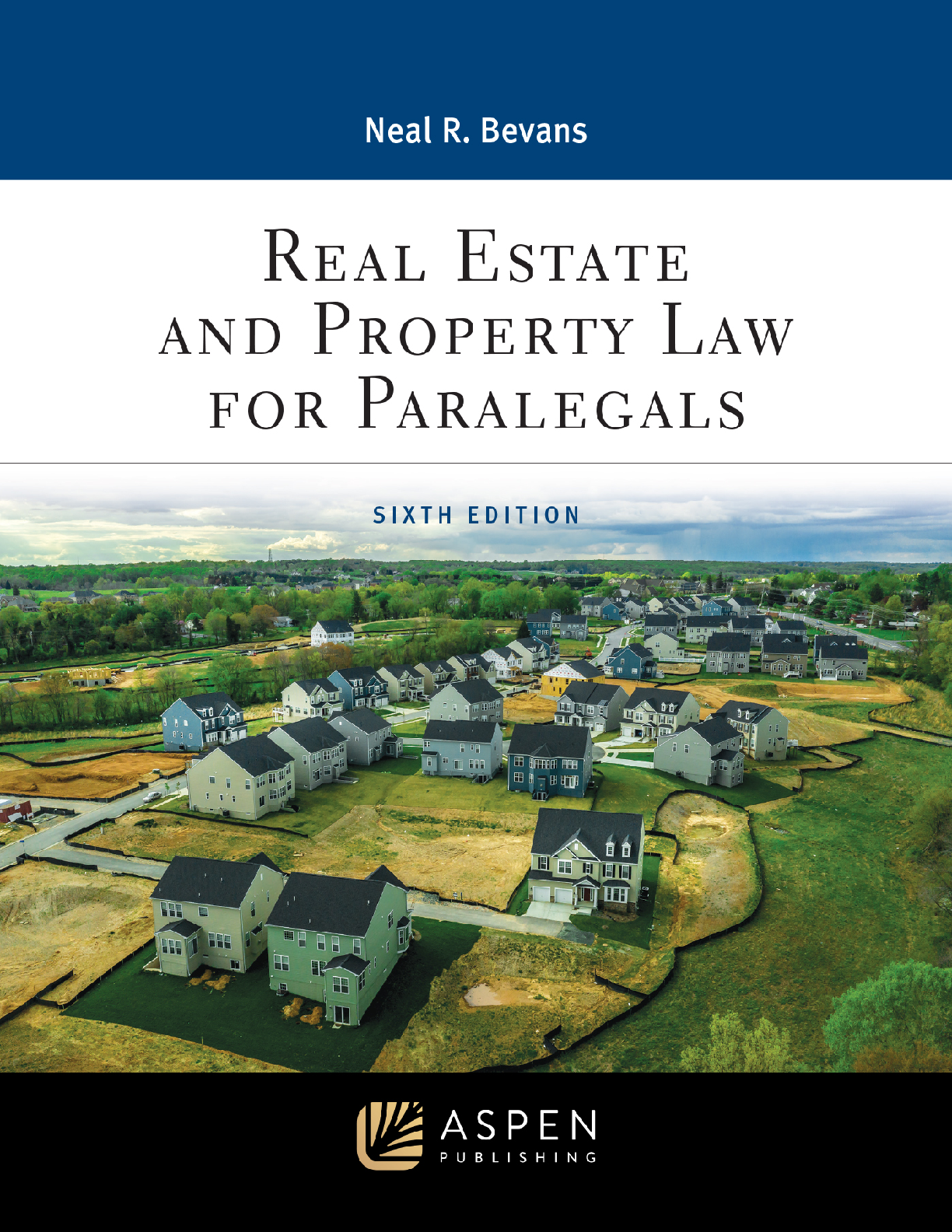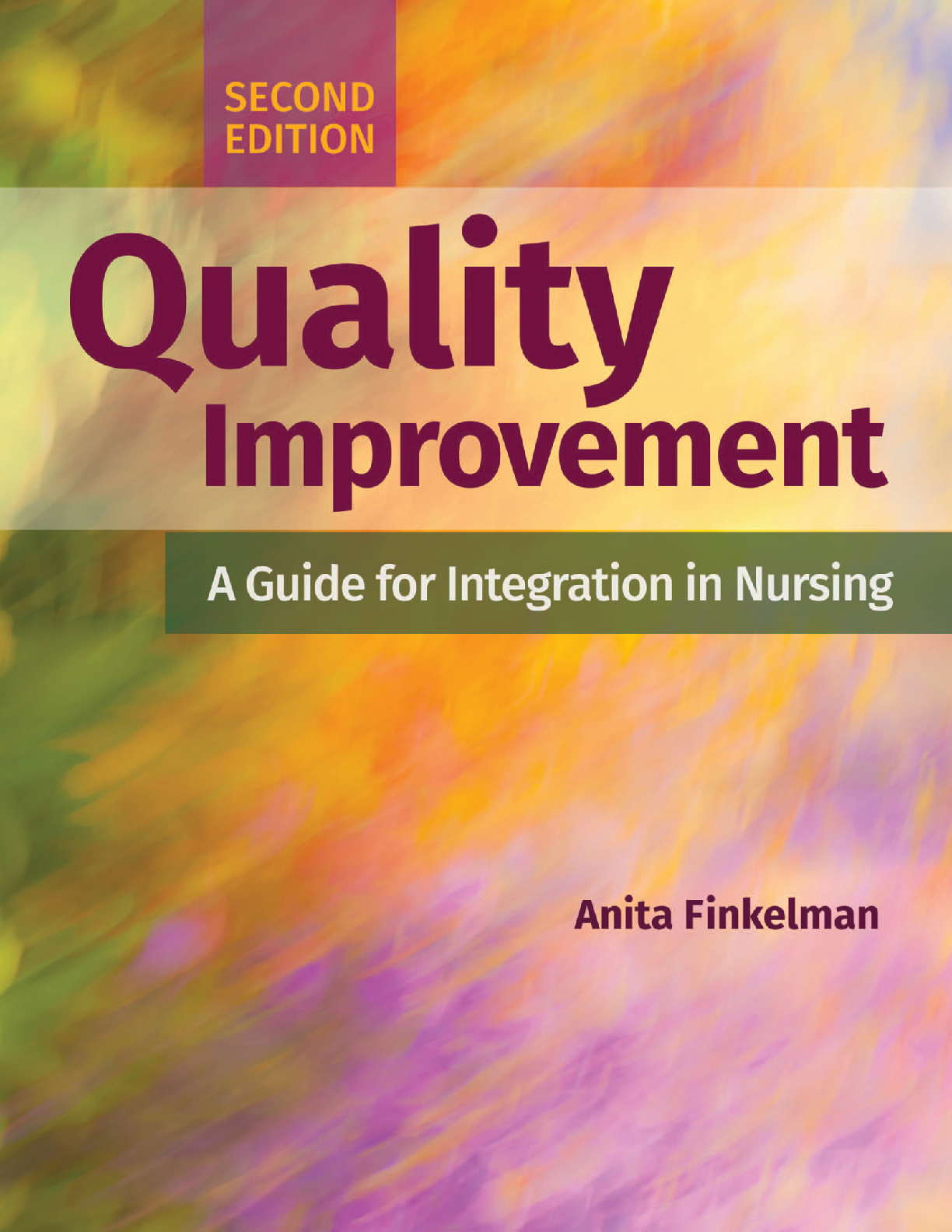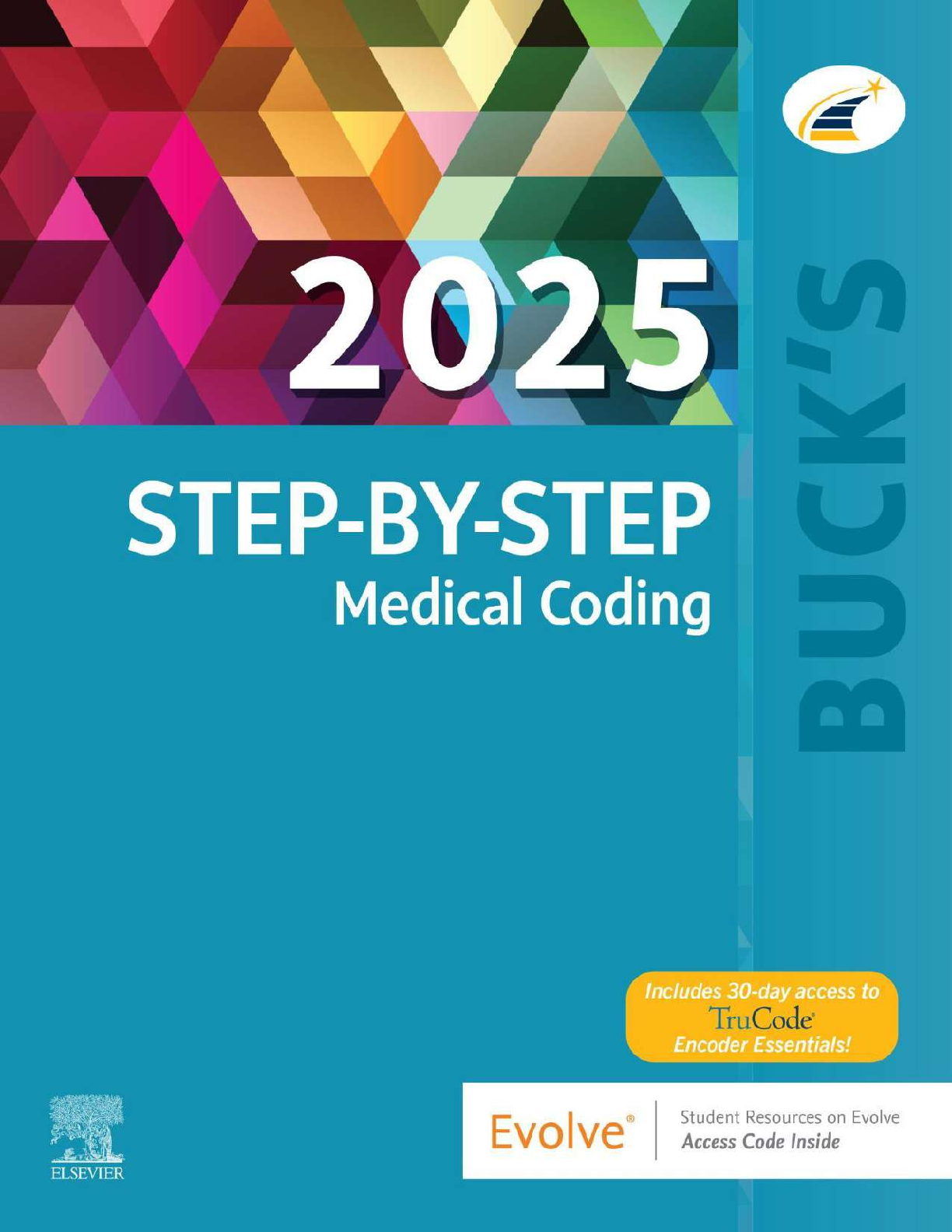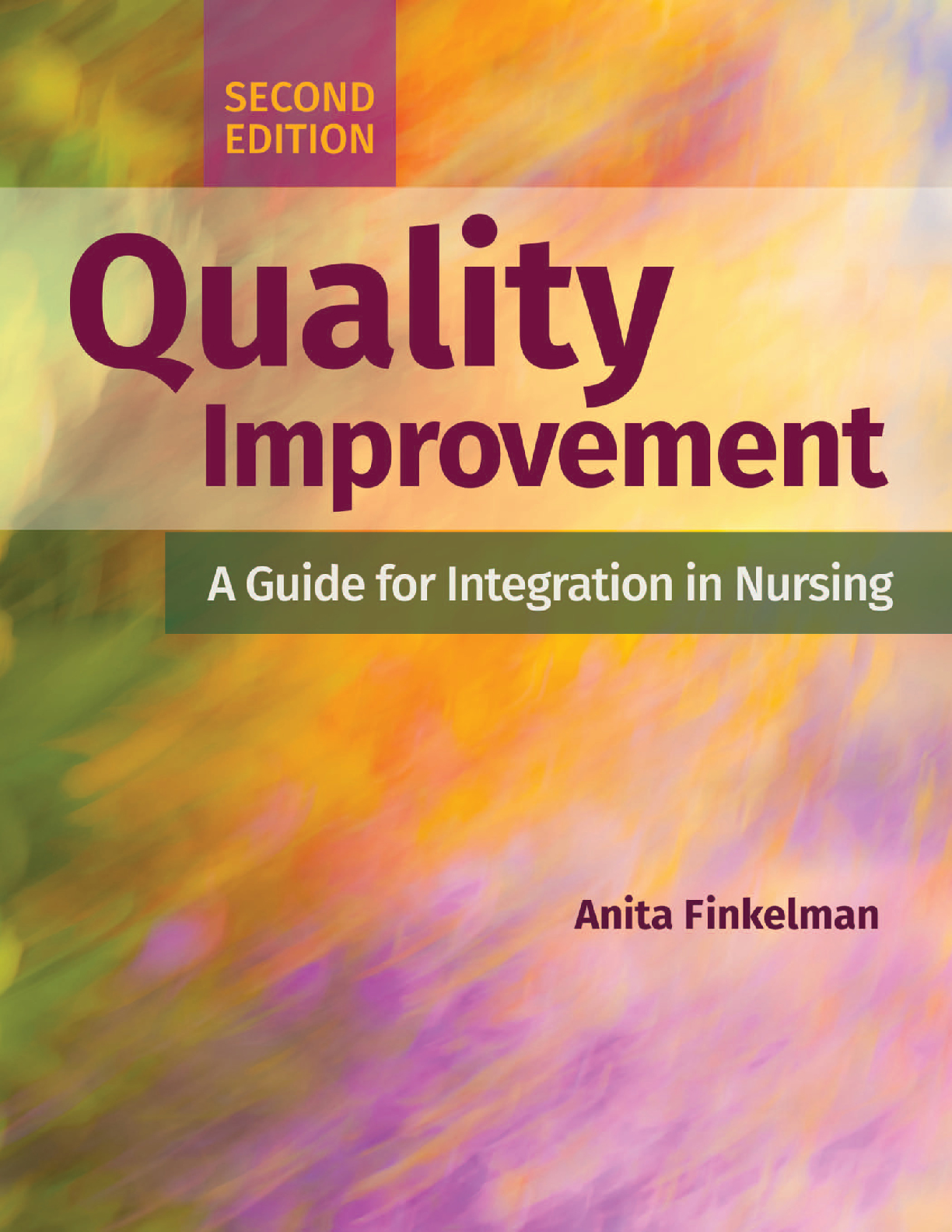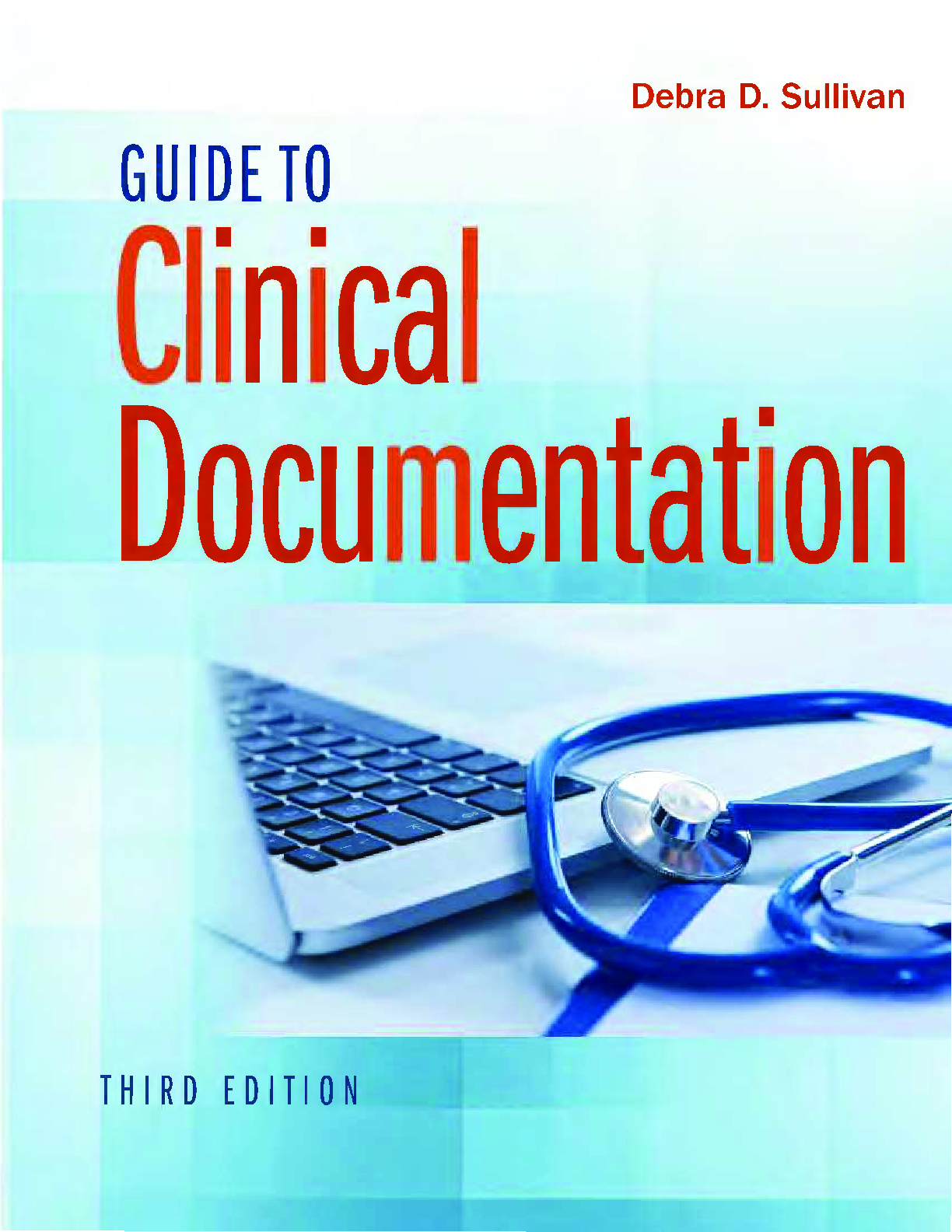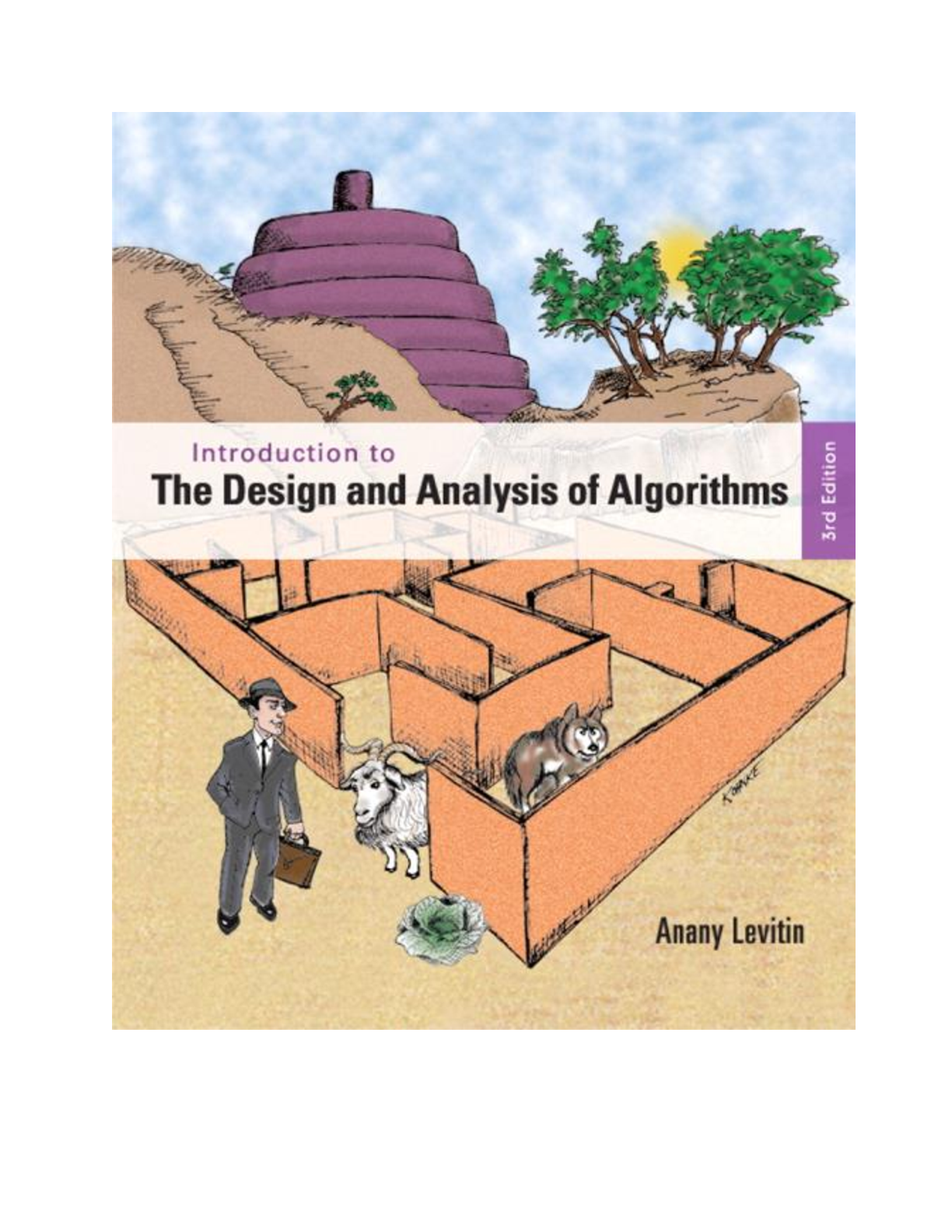Medical Studies > eBook-PDF > Genetic Analysis An Integrated Approach, 3rd Edition By John Bowman, Mark Sanders | eBook PDF (All)
Genetic Analysis An Integrated Approach, 3rd Edition By John Bowman, Mark Sanders | eBook PDF
Document Content and Description Below
Brief Table of Contents Genetic Analysis AN INTEGRATED APPROACH Table of Contents About the Authors Dedication Preface Our Integrated Approach New to This Edition Maintaining What Works Pathw... ays through the Book Chapter Features Student Supplements Instructor Supplements We Welcome Your Comments and Suggestions Reviewers Supplements and Media Contributors Unparalleled Problem-Solving Support Applications of Genetics New Questions Support Active Learning Learn Genetics Concepts and Problem Solving with Mastering Genetics Access the text anytime, anywhere with Pearson eText 1 The Molecular Basis of Heredity, Variation, and Evolution 1.1 Modern Genetics Is in Its Second Century The Development of Modern Genetics The Four Phases of Modern Genetics Location of the Genetic Material Identifying the Genetic Material Describing the Nature and Processing of Genetic Information The Genomics Era Genetics—Central to Modern Biology 1.2 The Structure of DNA Suggests a Mechanism for Replication The Discovery of DNA Structure DNA Nucleotides DNA Replication 1.3 DNA Transcription and Messenger RNA Translation Express Genes Transcription Translation 1.4 Genetic Variation Can Be Detected by Examining DNA, RNA, and Proteins Gel Electrophoresis Stains, Blots, and Probes DNA Sequencing and Genomics Proteomics and Other “-omic” Analyses 1.5 Evolution Has a Genetic Basis Darwin’s Theory of Evolution Four Evolutionary Processes Tracing Evolutionary Relationships Constructing Phylogenetic Trees Using Morphology and Anatomy Constructing Phylogenetic Trees Using Proteins or Nucleic Acids Case Study Ancient DNA: Genetics Looks into the Past Summary 1.1 Modern Genetics Is in Its Second Century 1.2 The Structure of DNA Suggests a Mechanism for Replication 1.3 DNA Transcription and Messenger RNA Translation Express Genes 1.4 Genetic Variation Can Be Detected by Examining DNA, RNA, and Proteins 1.5 Evolution Has a Genetic Basis Preparing for Problem Solving Problems Chapter Concepts Application and Integration Collaboration and Discussion 2 Transmission Genetics 2.1 Gregor Mendel Discovered the Basic Principles of Genetic Transmission Mendel’s Modern Experimental Approach Five Critical Experimental Innovations Controlled Crosses between Plants Pure-Breeding Strains to Begin Experimental Crosses Selection of Single Traits with Two Phenotypes Quantification of Results Replicate-, Reciprocal-, and Test-Cross Analysis 2.2 Monohybrid Crosses Reveal the Segregation of Alleles Identifying Dominant and Recessive Traits Evidence of Particulate Inheritance and Rejection of the Blending Theory Segregation of Alleles Hypothesis Testing by Test-Cross Analysis Hypothesis Testing by F2 Self-Fertilization 2.3 Dihybrid and Trihybrid Crosses Reveal the Independent Assortment of Alleles Dihybrid-Cross Analysis of Two Genes Testing Independent Assortment by Test-Cross Analysis Testing Independent Assortment by Trihybrid-Cross Analysis The Rediscovery of Mendel’s Work 2.4 Probability Theory Predicts Mendelian Ratios The Product Rule The Sum Rule Conditional Probability Binomial Probability Construction of a Binomial Expansion Formula Application of Binomial Probability to Progeny Phenotypes 2.5 Chi-Square Analysis Tests the Fit between Observed Values and Expected Outcomes Chi-Square Analysis Chi-Square Analysis of Mendel’s Data 2.6 Autosomal Inheritance and Molecular Genetics Parallel the Predictions of Mendel’s Hereditary Principles Autosomal Dominant Inheritance Autosomal Recessive Inheritance Prospective and Retrospective Predictions in Human Genetics Molecular Genetics of Mendel’s Traits Seed Shape (Round and Wrinkled, Gene Sbe1) Stem Length (Tall and Short, Gene Le) Seed Color (Yellow and Green, Gene Sgr) Flower Color (Purple and White, Gene bHLH) Case Study OMIM, Gene Mutations, and Human Hereditary Disease Cataloging Hereditary Diseases and Disease Genes The Frequency of Gene Mutations Summary 2.1 Gregor Mendel Discovered the Basic Principles of Genetic Transmission 2.2 Monohybrid Crosses Reveal the Segregation of Alleles 2.3 Dihybrid and Trihybrid Crosses Reveal the Independent Assortment of Alleles 2.4 Probability Theory Predicts Mendelian Ratios 2.5 Chi-Square Analysis Tests the Fit between Observed Values and Expected Outcomes 2.6 Autosomal Inheritance and Molecular Genetics Parallel the Predicitions of Mendel’s Hereditary Principles Preparing for Problem Solving Problems Chapter Concepts Application and Integration Collaboration and Discussion 3 Cell Division and Chromosome Heredity 3.1 Mitosis Divides Somatic Cells The Cell Cycle Substages of M Phase Chromosome Movement and Distribution Completion of Cell Division Cell Cycle Checkpoints 3.2 Meiosis Produces Cells for Sexual Reproduction Meiosis Features Two Cell Divisions Meiosis I Meiosis II Meiosis Generates Mendelian Ratios 3.3 The Chromosome Theory of Heredity Proposes That Genes Are Carried on Chromosomes X-Linked Inheritance Testing the Chromosome Theory of Heredity 3.4 Sex Determination Is Chromosomal and Genetic Sex Determination in Drosophila Mammalian Sex Determination Diversity of Sex Determination 3.5 Human Sex-Linked Transmission Follows Distinct Patterns Expression of X-Linked Recessive Traits X-Linked Dominant Trait Transmission Y-Linked Inheritance 3.6 Dosage Compensation Equalizes the Expression of Sex-Linked Genes Case Study The (Degenerative) Evolution of the Mammalian Y Chromosome A Story of Degeneration Major Restructuring Events Summary 3.1 Mitosis Divides Somatic Cells 3.2 Meiosis Produces Cells for Sexual Reproduction 3.3 The Chromosome Theory of Heredity Proposes That Genes Are Carried on Chromosomes 3.4 Sex Determination Is Chromosomal and Genetic 3.5 Human Sex-Linked Transmission Follows Distinct Patterns 3.6 Dosage Compensation Equalizes the Expression of Sex-Linked Genes Preparing for Problem Solving Problems Chapter Concepts Application and Integration Collaboration and Discussion 4 Gene Interaction 4.1 Interactions between Alleles Produce Dominance Relationships The Molecular Basis of Dominance Haplosufficient Wild-Type Allele Is Dominant Haploinsufficient Wild-Type Allele is Recessive Functional Effects of Mutation Loss-of-Function Mutations Gain-of-Function Mutations Notational Systems for Genes and Allele Relationships Incomplete Dominance Codominance Dominance Relationships of ABO Alleles Determining ABO Blood Type The Molecular Basis of Dominance and Codominance of ABO Alleles Allelic Series The C-Gene System for Mammalian Coat Color The Molecular Basis of the C-Gene Allelic Series Lethal Alleles Detection in Plants Detection in Animals An Allele That Is Both Dominant and Recessive Delayed Age of Onset 4.2 Some Genes Produce Variable Phenotypes Sex-Limited Traits Sex-Influenced Traits Incomplete Penetrance Variable Expressivity Gene–Environment Interactions Environmental Modification to Prevent Hereditary Disease Pleiotropic Genes 4.3 Gene Interaction Modifies Mendelian Ratios Gene Interaction in Pathways The One Gene–One Enzyme Hypothesis Genetic Dissection to Investigate Gene Action Epistasis and Its Results No Interaction (9:3:3:1 Ratio) Complementary Gene Interaction (9:7 Ratio) Duplicate Gene Action (15:1 Ratio) Dominant Gene Interaction (9:6:1 Ratio) Recessive Epistasis (9:3:4 Ratio) Dominant Epistasis (12:3:1 Ratio) Dominant Suppression (13:3 Ratio) 4.4 Complementation Analysis Distinguishes Mutations in the Same Gene from Mutations in Different Genes Case Study Complementation Groups in a Human Cancer-Prone Disorder Complementation Groups Associated Gene Functions Summary 4.1 Interactions between Alleles Produce Dominance Relationships 4.2 Some Genes Produce Variable Phenotypes 4.3 Gene Interaction Modifies Mendelian Ratios 4.4 Complementation Analysis Distinguishes Mutations in the Same Gene from Mutations in Different Genes Preparing for Problem Solving Problems Chapter Concepts Application and Integration Collaboration and Discussion 5 Genetic Linkage and Mapping in Eukaryotes 5.1 Linked Genes Do Not Assort Independently Detecting Genetic Linkage The Discovery of Genetic Linkage Detecting Autosomal Genetic Linkage through Test-Cross Analysis Cytological Evidence of Recombination 5.2 Genetic Linkage Mapping Is Based on Recombination Frequency between Genes The First Genetic Linkage Map Map Units Chi-Square Analysis of Genetic Linkage Data 5.3 Three-Point Test-Cross Analysis Maps Genes Identifying Parental, Single-Crossover, and Double-Crossover Gametes in Three-Point Mapping Constructing a Three-Point Recombination Map Question 1: Are the Data Consistent with the Proposal of Genetic Linkage? Question 2: What Alleles Are on Each Parental Chromosome? Question 3: What Is the Gene Order on the Chromosome? Question 4: What Are the Recombination Frequencies of the Gene Pairs? Question 5: Is the Frequency of Double Crossovers Consistent with the Independent Occurrence of the Single Crossovers? Determining Gamete Frequencies from Genetic Maps Correction of Genetic Map Distances 5.4 Multiple Factors Cause Recombination to Vary Sex Affects Recombination Recombination Is Dominated by Hotspots Genome Sequence Analysis Reveals Recombination Hotspot Distribution 5.5 Human Genes Are Mapped Using Specialized Methods Mapping with Genetic Markers The Inheritance of Disease-Causing Genes Linked to Genetic Markers Allelic Phase Lod Score Analysis Genome-Wide Association Studies Linkage Disequilibrium and Evolutionary Analysis Case Study Mapping the Gene for Cystic Fibrosis Summary 5.1 Linked Genes Do Not Assort Independently 5.2 Genetic Linkage Mapping Is Based on Recombination Frequency between Genes 5.3 Three-Point Test-Cross Analysis Maps Genes 5.4 Multiple Factors Cause Recombination to Vary 5.5 Human Genes Are Mapped Using Specialized Methods Preparing for Problem Solving Problems Chapter Concepts Application and Integration Collaboration and Discussion 6 Genetic Analysis and Mapping in Bacteria and Bacteriophages 6.1 Specialized Methods Are Used for Genetic Analysis of Bacteria Bacterial Culture and Growth Analysis Characteristics of Bacterial Genomes Plasmids in Bacterial Cells 6.2 Bacteria Transfer Genes by Conjugation Conjugation Identified Transfer of the F Factor Formation of an Hfr Chromosome Hfr Gene Transfer Interrupted Mating and Time-of-Entry Mapping Time-of-Entry Mapping Experiments Consolidation of Hfr Maps Conjugation with F ′ Strains Produces Partial Diploids Plasmids and Conjugation in Archaea 6.3 Bacterial Transformation Produces Genetic Recombination Steps in Transformation Mapping by Transformation 6.4 Bacterial Transduction Is Mediated by Bacteriophages Bacteriophage Life Cycles Generalized Transduction Cotransduction Cotransduction Mapping Specialized Transduction 6.5 Bacteriophage Chromosomes Are Mapped by Fine-Structure Analysis Genetic Complementation Analysis Intragenic Recombination Analysis Deletion-Mapping Analysis 6.6 Lateral Gene Transfer Alters Genomes Lateral Gene Transfer and Genome Evolution Identifying Lateral Gene Transfer in Genomes Case Study The Evolution of Antibiotic Resistance and Its Impact on Medical Practice Summary 6.1 Specialized Methods Are Used for Genetic Analysis of Bacteria 6.2 Bacteria Transfer Genes by Conjugation 6.3 Bacterial Transformation Produces Genetic Recombination 6.4 Bacterial Transduction Is Mediated by Bacteriophages 6.5 Bacteriophage Chromosomes Are Mapped by Fine-Structure Analysis 6.6 Lateral Gene Transfer Alters Genomes Preparing for Problem Solving Problems Chapter Concepts Application and Integration Collaboration and Discussion Application A Human Hereditary Disease and Genetic Counseling A.1 Hereditary Disease and Disease Genes Types of Hereditary Disease Mendelian Conditions Chromosomal Conditions Multifactorial Conditions Genetic Testing and Diagnosis Carrier Testing Presymptomatic Testing Newborn Testing Prenatal Testing A.2 Genetic Counseling Indicators and Goals of Genetic Counseling Assessing and Communicating Risks and Options Immediate Decision Making Assessment of Future Risk Ethical Issues in Genetic Medicine Genetic Counseling and Ethical Issues Prenatal Genetic and Chromosome Testing Newborn Genetic Screening Testing for Genetic Predisposition In Closing Problems 7 DNA Structure and Replication 7.1 DNA Is the Hereditary Molecule of Life Chromosomes Contain DNA A Transformation Factor Responsible for Heredity DNA Is the Transformation Factor DNA Is the Hereditary Molecule 7.2 The DNA Double Helix Consists of Two Complementary and Antiparallel Strands DNA Nucleotides The DNA Duplex 7.3 DNA Replication Is Semiconservative and Bidirectional Three Competing Models of Replication The Meselson–Stahl Experiment Origin and Directionality of Replication in Bacterial DNA Multiple Replication Origins in Eukaryotes 7.4 DNA Replication Precisely Duplicates the Genetic Material DNA Sequences at Replication Origins Molecular Biology of Replication Initiation Continuous and Discontinuous Strand Replication RNA Primer Removal and Okazaki Fragment Ligation Synthesis of Leading and Lagging Strands at the Replication Fork DNA Proofreading Supercoiling and Topoisomerases Replication at the Ends of Linear Chromosomes 7.5 Methods of Molecular Genetic Analysis Make Use of DNA Replication Processes The Polymerase Chain Reaction Separation of PCR Products Dideoxynucleotide DNA Sequencing New Generations of DNA Sequencing Technology Next-Generation Sequencing Third-Generation Sequencing Case Study DNA Helicase Gene Mutations and Human Progeroid Syndrome HUMAN PROGEROID SYNDROME RECQ HELICASE–ASSOCIATED PROGEROID CONDITIONS BLOOM SYNDROME ROTHMUND–THOMSON SYNDROME WERNER SYNDROME Summary 7.1 DNA Is the Hereditary Molecule of Life 7.2 The DNA Double Helix Consists of Two Complementary and Antiparallel Strands 7.3 DNA Replication Is Semiconservative and Bidirectional 7.4 DNA Replication Precisely Duplicates the Genetic Material 7.5 Methods of Molecular Genetic Analysis Make Use of DNA Replication Processes Preparing for Problem Solving Problems Chapter Concepts Application and Integration Collaboration and Discussion 8 Molecular Biology of Transcription and RNA Processing 8.1 RNA Transcripts Carry the Messages of Genes RNA Nucleotides and Structure Experimental Discovery of Messenger RNA Categories of RNA 8.2 Bacterial Transcription Is a Four-Stage Process Bacterial RNA Polymerase Bacterial Promoters Transcription Initiation Transcription Elongation and Termination Transcription Termination Mechanisms Intrinsic Termination Rho-Dependent Termination 8.3 Eukaryotic Transcription Is More Diversified and Complex than Bacterial Transcription Polymerase II Transcription of mRNA in Eukaryotes Pol II Promoter Recognition Detecting Promoter Consensus Elements Other Regulatory Sequences and Chromatin-Based Regulation of RNA Pol II Transcription RNA Polymerase I Promoters RNA Polymerase III Promoters Archaeal Promoters and Transcription The Evolutionary Implications of Comparative Transcription 8.4 Posttranscriptional Processing Modifies RNA Molecules Capping 5′ Pre-mRNA Polyadenylation of 3′ Pre-mRNA The Torpedo Model of Transcription Termination Introns Pre-mRNA Splicing Splicing Signal Sequences A Gene Expression Machine Couples Transcription and Pre-mRNA Processing Alternative Patterns of RNA Transcription and Alternative RNA Splicing Self-Splicing Introns Ribosomal RNA Processing Transfer RNA Processing RNA Editing Case Study Sexy Splicing: Alternative mRNA Splicing and Sex Determination in Drosophila Summary 8.1 RNA Transcripts Carry the Messages of Genes 8.2 Bacterial Transcription Is a Four-Stage Process 8.3 Eukaryotic Transcription Is More Diversified and Complex than Bacterial Transcription 8.4 Posttranscriptional Processing Modifies RNA Molecules Preparing for Problem Solving Problems Chapter Concepts Application and Integration Collaboration and Discussion 9 The Molecular Biology of Translation 9.1 Polypeptides Are Amino Acid Chains That Are Assembled at Ribosomes Amino Acid Structure Polypeptide and Transcript Structure Ribosome Structures A Three-Dimensional View of the Ribosome 9.2 Translation Occurs in Three Phases Translation Initiation Bacterial Translation Initiation Eukaryotic Translation Initiation Archaeal Translation Initiation and Its Implications for Evolution Polypeptide Elongation Polypeptide Elongation in Bacteria Elongation of Eukaryotic and Archaeal Polypeptides Translation Termination 9.3 Translation Is Fast and Efficient The Translational Complex Translation of Polycistronic mRNA 9.4 The Genetic Code Translates Messenger RNA into Polypeptide The Genetic Code Displays Third-Base Wobble The (Almost) Universal Genetic Code Charging tRNA Molecules Protein Folding and Posttranslational Polypeptide Processing The Signal Hypothesis 9.5 Experiments Deciphered the Genetic Code No Overlap in the Genetic Code A Triplet Genetic Code No Gaps in the Genetic Code Deciphering the Genetic Code Case Study Antibiotics and Translation Interference Protein Synthesis Inhibition by Antibiotic Compounds Translation Disruption by Aminoglycosides Translation Blockage by Antifungal Compounds Summary 9.1 Polypeptides Are Amino Acid Chains That Are Assembled at Ribosomes 9.2 Translation Occurs in Three Phases 9.3 Translation Is Fast and Efficient 9.4 The Genetic Code Translates Messenger RNA into Polypeptide 9.5 Experiments Deciphered the Genetic Code Preparing for Problem Solving Problems Chapter Concepts Application and Integration Collaboration and Discussion Application B Human Genetic Screening B.1 Presymptomatic Diagnosis of Huntington’s Disease Trinucleotide Repeat Expansion Detecting the Number of Repeats B.2 Newborn Genetic Screening Phenylketonuria and the First Newborn Genetic Test Living with PKU The Recommended Uniform Screening Panel B.3 Genetic Testing to Identify Carriers Testing Blood Proteins DNA-Based Carrier Screening and Diagnostic Verification Carrier Screening Criteria Pharmacogenetic Screening B.4 Prenatal Genetic Testing Invasive Screening Using Amniocentesis or Chorionic Villus Sampling Noninvasive Prenatal Testing Maternal Serum Screening Prenatal Ultrasound Imaging Fetal Cell Sorting Preimplantation Genetic Screening B.5 Direct-to-Consumer Genetic Testing B.6 Opportunities and Choices Problems 10 Eukaryotic Chromosome Abnormalities and Molecular Organization 10.1 Chromosome Number and Shape Vary among Organisms Chromosomes in Nuclei Chromosome Visualization Chromosome Banding Heterochromatin and Euchromatin 10.2 Nondisjunction Leads to Changes in Chromosome Number Chromosome Nondisjunction Gene Dosage Alteration Aneuploidy in Humans Mosaicism Uniparental Disomy 10.3 Changes in Euploid Content Lead to Polyploidy Causes of Autopolyploidy and Allopolyploidy Consequences of Polyploidy Polyploidy and Evolution 10.4 Chromosome Breakage Causes Mutation by Loss, Gain, and Rearrangement of Chromosomes Partial Chromosome Deletion Unequal Crossover Detecting Duplication and Deletion Deletion Mapping 10.5 Chromosome Breakage Leads to Inversion and Translocation of Chromosomes Chromosome Inversion Chromosome Translocation Patterns of Reciprocal Balanced Translocation Patterns of Robertsonian Translocation 10.6 Eukaryotic Chromosomes Are Organized into Chromatin Chromatin Compaction Histone Proteins and Nucleosomes Higher Order Chromatin Organization and Chromosome Structure Nucleosome Disassembly, Synthesis, and Reassembly during Replication Position Effect Variegation: Effect of Chromatin State on Transcription Case Study Human Chromosome Evolution Summary 10.1 Chromosome Number and Shape Vary among Organisms 10.2 Nondisjunction Leads to Changes in Chromosome Number 10.3 Changes in Euploid Content Lead to Polyploidy 10.4 Chromosome Breakage Causes Mutation by Loss, Gain, and Rearrangement of Chromosomes 10.5 Chromosome Breakage Leads to Inversion and Translocation of Chromosomes 10.6 Eukaryotic Chromosomes Are Organized into Chromatin Preparing for Problem Solving Problems Chapter Concepts Application and Integration Collaboration and Discussion 11 Gene Mutation, DNA Repair, and Homologous Recombination 11.1 Mutations Are Rare and Random and Alter DNA Sequence Proof of the Random Mutation Hypothesis Germ-Line and Somatic Mutations Point Mutations Base-Pair Substitution Mutations Synonymous Mutation Missense Mutation Nonsense Mutation Frameshift Mutations Regulatory Mutations Promoter Mutations Splicing Mutations Cryptic Splice Sites Polyadenylation Mutations Forward Mutation and Reversion 11.2 Gene Mutations May Arise from Spontaneous Events Spontaneous DNA Replication Errors Insertions and Deletions of Nucleotide Repeats Mispaired Nucleotides Spontaneous Nucleotide Base Changes 11.3 Mutations May Be Caused by Chemicals or Ionizing Radiation Chemical Mutagens Nucleotide Base Analogs Deaminating Agents Alkylating Agents Hydroxylating Agents DNA Intercalating Agents Radiation-Induced DNA Damage The Ames Test 11.4 Repair Systems Correct Some DNA Damage Direct Repair of DNA Damage Photoreactive Repair Base Excision Repair Nucleotide Excision Repair Mismatch Repair DNA Damage-Signaling Systems 11.5 Proteins Control Translesion DNA Synthesis and the Repair of Double-Strand Breaks Translesion DNA Synthesis Double-Strand Break Repair Nonhomologous End Joining Synthesis-Dependent Strand Annealing 11.6 DNA Double-Strand Breaks Initiate Homologous Recombination The Holliday Model The Bacterial RecBCD Pathway The Double-Stranded Break Model of Homologous Recombination 11.7 Transposable Genetic Elements Move throughout the Genome The Characteristics and Classification of Transposable Elements The Mutagenic Effect of Transposition Transposable Elements in Bacterial Genomes Insertion Sequences Composite Transposons Noncomposite Transposons Transposable Elements in Eukaryotic Genomes The Discovery of Ds and Ac Elements in Maize Drosophila P Elements Retrotransposons LINE, SINE, and Alu Elements of Humans Ty Elements of Yeast Copia Elements of Drosophila Case Study Mendel’s Peas Are Shaped by Transposition Protein Analysis Messenger RNA Analysis DNA Analysis Wrinkled Seed Development Summary 11.1 Mutations Are Rare and Random and Alter DNA Sequence 11.2 Gene Mutations May Arise from Spontaneous Events 11.3 Mutations May Be Caused by Chemicals or Ionizing Radiation 11.4 Repair Systems Correct Some DNA Damage 11.5 Proteins Control Translesion DNA Synthesis and the Repair of Double-Strand Breaks 11.6 DNA Double-Strand Breaks Initiate Homologous Recombination 11.7 Transposable Genetic Elements Move throughout the Genome Preparing for Problem Solving Problems Chapter Concepts Application and Integration Collaboration and Discussion 12 Regulation of Gene Expression in Bacteria and Bacteriophage 12.1 Transcriptional Control of Gene Expression Requires DNA–Protein Interaction Negative and Positive Control of Transcription Regulatory DNA-Binding Proteins 12.2 The lac Operon Is an Inducible Operon System under Negative and Positive Control Lactose Metabolism lac Operon Structure lac Operon Function 12.3 Mutational Analysis Deciphers Genetic Regulation of the lac Operon Analysis of Structural Gene Mutations lac Operon Regulatory Mutations Operator Mutations Constitutive Repressor Protein Mutations Super-Repressor Protein Mutations Promoter Mutations Molecular Analysis of the lac Operon 12.4 Transcription from the Tryptophan Operon Is Repressible and Attenuated Feedback Inhibition of Tryptophan Synthesis Attenuation of the trp Operon Attenuation Mutations Attenuation in Other Amino Acid Operon Systems 12.5 Bacteria Regulate the Transcription of Stress Response Genes and Also Translation Alternative Sigma Factors and Stress Response Translational Regulation in Bacteria 12.6 Riboswitches Regulate Bacterial Transcription, Translation, and mRNA Stability Riboswitch Regulation of Transcription Riboswitch Regulation of Translation Riboswitch Control of mRNA Stability 12.7 Antiterminators and Repressors Control Lambda Phage Infection of E. coli The Lambda Phage Genome Early Gene Transcription Cro Protein and the Lytic Cycle The λ Repressor Protein and Lysogeny Resumption of the Lytic Cycle Following Lysogeny Induction Case Study Vibrio cholerae—Stress Response Leads to Serious Infection Through Positive Control of Transcription VIBRIO CHOLERAE TOXINS PREVENTING AND STUDYING THE DISEASE PROCESS Summary 12.1 Transcriptional Control of Gene Expression Requires DNA–Protein Interaction 12.2 The lac Operon Is an Inducible Operon System under Negative and Positive Control 12.3 Mutational Analysis Deciphers Genetic Regulation of the lac Operon 12.4 Transcription from the Tryptophan Operon Is Repressible and Attenuated 12.5 Bacteria Regulate the Transcription of Stress Response Genes and Also Translation 12.6 Riboswitches Regulate Bacterial Transcription, Translation, and mRNA Stability 12.7 Antiterminators and Repressors Control Lambda Phage Infection of E. coli Preparing for Problem Solving Problems Chapter Concepts Application and Integration Collaboration and Discussion 13 Regulation of Gene Expression in Eukaryotes 13.1 Cis-Acting Regulatory Sequences Bind Trans-Acting Regulatory Proteins to Control Eukaryotic Transcription Overview of Transcriptional Regulatory Interactions in Eukaryotes Integration and Modularity of Eukaryotic Regulatory Sequences Locus Control Regions Enhancer-Sequence Conservation Yeast as a Simple Model for Eukaryotic Transcription Insulator Sequences 13.2 Chromatin Remodeling and Modification Regulates Eukaryotic Transcription PEV Mutations Overview of Chromatin Remodeling and Chromatin Modification Open and Covered Promoters Mechanisms of Chromatin Remodeling The SWI/SNF Complex The ISWI Complex The SWR1 Complex Chemical Modifications of Chromatin An Example of Inducible Transcriptional Regulation in S. cerevisiae Facultative Heterochromatin and Developmental Genes Epigenetic Heritability lncRNAs and Inactivation of Eutherian Mammalian Female X Chromosomes Genomic Imprinting Nucleotide Methylation 13.3 RNA-Mediated Mechanisms Control Gene Expression Gene Silencing by Double-Stranded RNA Cleaving dsRNA RISC and Argonaute Constitutive Heterochromatin Maintenance The Evolution and Applications of RNAi Case Study Environmental Epigenetics Honeybee Destiny Evidence in Mice Inheritance of Famine Effects Summary 13.1 Cis-Acting Regulatory Sequences Bind Trans-Acting Regulatory Proteins to Control Eukaryotic Transcription 13.2 Chromatin Remodeling and Modification Regulates Eukaryotic Transcription 13.3 RNA-Mediated Mechanisms Control Gene Expression Preparing for Problem Solving Problems Chapter Concepts Application and Integration Collaboration and Discussion 14 Analysis of Gene Function by Forward Genetics and Reverse Genetics 14.1 Forward Genetic Screens Identify Genes by Their Mutant Phenotypes General Design of Forward Genetic Screens Specific Strategies of Forward Genetic Screens Choosing an Organism Choosing a Mutagen Strategy for Identifying Dominant and Recessive Mutations Use of Balancer Chromosomes for Tracking Mutations Screening for Conditional Alleles in Haploid Organisms Analysis of Mutageneses Determining Dominance or Recessiveness Determining the Number of Genes Identified Determining the Number of Mutant Alleles Identified for a Gene Identifying Interacting and Redundant Genes Using Modifier Screens 14.2 Genes Identified by Mutant Phenotype Are Cloned Using Recombinant DNA Technology Cloning Genes by Complementation Genome Sequencing to Determine Gene Identification 14.3 Reverse Genetics Investigates Gene Action by Progressing from Gene Identification to Phenotype Genome Editing CRISPR–Cas9 Application of Crispr–Cas9 Use of Homologous Recombination in Reverse Genetics Use of Insertion Mutants in Reverse Genetics RNA Interference in Gene Activity Reverse Genetics by TILLING 14.4 Transgenes Provide a Means of Dissecting Gene Function Monitoring Gene Expression with Reporter Genes Enhancer Trapping Investigating Gene Function with Chimeric Genes Case Study Reverse Genetics and Genetic Redundancy in Flower Development FORWARD GENETICS REVEALS GENES OF INTEREST IDENTIFICATION OF HOMOLOGOUS GENES REVERSE GENETICS REVEALS FUNCTIONS OF HOMOLOGOUS GENES Summary 14.1 Forward Genetic Screens Identify Genes by Their Mutant Phenotypes 14.2 Genes Identified by Mutant Phenotype Are Cloned Using Recombinant DNA Technology 14.3 Reverse Genetics Investigates Gene Action by Progressing from Gene Identification to Phenotype 14.4 Transgenes Provide a Means of Dissecting Gene Function Preparing for Problem Solving Problems Chapter Concepts Application and Integration Collaboration and Discussion Application C The Genetics of Cancer C.1 Cancer Is a Somatic Genetic Disease that Is Only Occasionally Inherited C.2 What Is Cancer and What Are the Characteristics of Cancer? Progression of Abnormalities The Hallmarks of Cancer Cells and Malignant Tumors C.3 The Genetic Basis of Cancer Single Gene Mutations and Cancer Development Chronic Myelogenous Leukemia Burkitt’s Lymphoma Retinoblastoma Li–Fraumeni Syndrome The Genetic Progression of Cancer Development and Cancer Predisposition Breast and Ovarian Cancer and the Inheritance of Cancer Susceptibility C.4 Cancer Cell Genome Sequencing and Improvements in Therapy The Cancer Genome Atlas Epigenetic Irregularities Targeted Cancer Therapy Problems 15 Recombinant DNA Technology and Its Applications 15.1 Specific DNA Sequences Are Identified and Manipulated Using Recombinant DNA Technology Restriction Enzymes Molecular Cloning Creating Recombinant DNA Molecules Plasmids as Cloning Vectors Amplifying Recombinant DNA Molecules Artificial Chromosomes DNA Libraries Constructing Genomic Libraries Constructing cDNA Libraries The Uses of Libraries Advances in Altering and Synthesizing DNA Molecules 15.2 Introducing Foreign Genes into Genomes Creates Transgenic Organisms Expression of Heterologous Genes in Bacterial and Fungal Hosts Production of Human Insulin in E. coli. Yeast Plasmids Transformation of Plant Genomes by Agrobacterium Creating Transgenic Plants Transgenic Plants in Agriculture Golden Rice Transgenic Animals Drosophila Mus musculus and Other Vertebrates Manipulation of DNA Sequences in Vivo 15.3 Gene Therapy Uses Recombinant DNA Technology Two Forms of Gene Therapy Somatic Gene Therapy Using ES Cells Creating ES Cells From Differentiated Cells of the Adult Body Gene Therapy Proof of Principle: Curing Sickle Cell Disease in Mice 15.4 Cloning of Plants and Animals Produces Genetically Identical Individuals Case Study Gene Drive Alleles Can Rapidly Spread Through Populations A GENE DRIVE ELEMENT CREATED WITH CRISPR–Cas APPLICATIONS CONCERNS Summary 15.1 Specific DNA Sequences Are Identified and Manipulated Using Recombinant DNA Technology 15.2 Introducing Foreign Genes into Genomes Creates Transgenic Organisms 15.3 Gene Therapy Uses Recombinant DNA Technology 15.4 Cloning of Plants and Animals Produces Genetically Identical Individuals Preparing for Problem Solving Problems Chapter Concepts Application and Integration Collaboration and Discussion 16 Genomics: Genetics from a Whole-Genome Perspective 16.1 Structural Genomics Provides a Catalog of Genes in a Genome Whole-Genome Shotgun Sequencing WGS Sequencing of a Bacterial Genome WGS Sequencing of a Eukaryotic Genome The Human Genome Reference Genomes and Resequencing Metagenomics 16.2 Annotation Ascribes Biological Function to DNA Sequences Experimental Approaches to Structural Annotation Computational Approaches to Structural Annotation Functional Gene Annotation Related Genes and Protein Motifs Variation in Genome Organization among Species Three Insights from Genome Sequences 16.3 Evolutionary Genomics Traces the History of Genomes The Tree of Life Interspecific Genome Comparisons: Gene Content The Births and Deaths of Genes Gene Duplication Lateral Gene Transfer Interspecific Genome Comparisons: Genome Annotation Conserved Coding Sequences Conserved Noncoding Sequences Interspecific Genome Comparisons: Gene Order 16.4 Functional Genomics Aims to Elucidate Gene Function Transcriptomics Transcriptome Analysis by Sequencing DNA Microarrays Example of Transcriptome Analysis Other “-omes” and “-omics” Genomic Approaches to Reverse Genetics Use of Yeast Mutants to Categorize Genes Genetic Networks Case Study Genomic Analysis of Insect Guts May Fuel the World Summary 16.1 Structural Genomics Provides a Catalog of Genes in a Genome 16.2 Annotation Ascribes Biological Function to DNA Sequences 16.3 Evolutionary Genomics Traces the History of Genomes 16.4 Functional Genomics Aims to Elucidate Gene Function Preparing for Problem Solving Problems Chapter Concepts Application and Integration Collaboration and Discussion 17 Organellar Inheritance and the Evolution of Organellar Genomes 17.1 Organellar Inheritance Transmits Genes Carried on Organellar Chromosomes The Discovery of Organellar Inheritance Homoplasmy and Heteroplasmy Genome Replication in Organelles Replicative Segregation of Organelle Genomes 17.2 Modes of Organellar Inheritance Depend on the Organism Mitochondrial Inheritance in Mammals Mother–Child Identity of Mitochondrial DNA Mitochondrial DNA Sequences and Species Evolution Mitochondrial Mutations and Human Genetic Disease Mating Type and Chloroplast Segregation in Chlamydomonas Biparental Inheritance in Saccharomyces cerevisiae Summary of Organellar Inheritance 17.3 Mitochondria Are the Energy Factories of Eukaryotic Cells Mitochondrial Genome Structure and Gene Content Mitochondrial Transcription and Translation 17.4 Chloroplasts Are the Sites of Photosynthesis Chloroplast Genome Structure and Gene Content Chloroplast Transcription and Translation Editing of Chloroplast mRNA 17.5 The Endosymbiosis Theory Explains Mitochondrial and Chloroplast Evolution Separate Evolution of Mitochondria and Chloroplasts Continual DNA Transfer from Organelles Encoding of Organellar Proteins The Origin of the Eukaryotic Lineage Secondary and Tertiary Endosymbioses Case Study Ototoxic Deafness: A Mitochondrial Gene–Environment Interaction Summary 17.1 Organellar Inheritance Transmits Genes Carried on Organellar Chromosomes 17.2 Modes of Organellar Inheritance Depend on the Organism 17.3 Mitochondria Are the Energy Factories of Eukaryotic Cells 17.4 Chloroplasts Are the Sites of Photosynthesis 17.5 The Endosymbiosis Theory Explains Mitochondrial and Chloroplast Evolution Preparing for Problem Solving Problems Chapter Concepts Application and Integration Collaboration and Discussion 18 Developmental Genetics 18.1 Development Is the Building of a Multicellular Organism Cell Differentiation Pattern Formation 18.2 Drosophila Development Is a Paradigm for Animal Development The Developmental Toolkit of Drosophila Maternal Effects on Pattern Formation Coordinate Gene Patterning of the Anterior–Posterior Axis Domains of Gap Gene Expression Regulation of Pair-Rule Genes Specification of Parasegments by Hox Genes The Antennapedia Complex The bithorax Complex Downstream Targets of Hox Genes Hox Genes throughout Metazoans Stabilization of Cellular Memory by Chromatin Architecture 18.3 Cellular Interactions Specify Cell Fate Inductive Signaling between Cells Lateral Inhibition Cell Death during Development 18.4 “Evolution Behaves Like a Tinkerer” Evolution through Co-option Constraints on Co-option 18.5 Plants Represent an Independent Experiment in Multicellular Evolution Development at Meristems Combinatorial Homeotic Activity in Floral-Organ Identity Homeotic Floral Mutants of Arabidopsis Homeotic MADS Box Transcription Factors Case Study Cyclopia and Polydactyly—Different Shh Mutations with Distinctive Phenotypes HOLOPROSENCEPHALY/CYCLOPIA POLYDACTYLY Summary 18.1 Development Is the Building of a Multicellular Organism 18.2 Drosophila Development Is a Paradigm for Animal Development 18.3 Cellular Interactions Specify Cell Fate 18.4 “Evolution Behaves Like a Tinkerer” 18.5 Plants Represent an Independent Experiment in Multicellular Evolution Preparing for Problem Solving Problems Chapter Concepts Application and Integration Collaboration and Discussion 19 Genetic Analysis of Quantitative Traits 19.1 Quantitative Traits Display Continuous Phenotype Variation Genetic Potential Major Gene Effects Additive Gene Effects Continuous Phenotypic Variation from Multiple Additive Genes Allele Segregation in Quantitative Trait Production Effects of Environmental Factors on Phenotypic Variation Threshold Traits 19.2 Quantitative Trait Analysis Is Statistical Statistical Description of Phenotypic Variation Partitioning Phenotypic Variance Partitioning Genetic Variance 19.3 Heritability Measures the Genetic Component of Phenotypic Variation Broad Sense Heritability Twin Studies Narrow Sense Heritability and Artificial Selection 19.4 Quantitative Trait Loci Are the Genes That Contribute to Quantitative Traits QTL Mapping Strategies Identification of QTL Genes Genome-Wide Association Studies Case Study The Genetics of Autism Spectrum Disorders Summary 19.1 Quantitative Traits Display Continuous Phenotype Variation 19.2 Quantitative Trait Analysis Is Statistical 19.3 Heritability Measures the Genetic Component of Phenotypic Variation 19.4 Quantitative Trait Loci Are the Genes That Contribute to Quantitative Traits Preparing for Problem Solving Problems Chapter Concepts Application and Integration Collaboration and Discussion 20 Population Genetics and Evolution at the Population, Species, and Molecular Levels 20.1 The Hardy–Weinberg Equilibrium Describes the Relationship of Allele and Genotype Frequencies in Populations Populations and Gene Pools The Hardy–Weinberg Equilibrium Determining Autosomal Allele Frequencies in Populations The Genotype Proportion Method The Allele-Counting Method The Square Root Method The Hardy–Weinberg Equilibrium for More than Two Alleles The Chi-Square Test of Hardy–Weinberg Predictions 20.2 Natural Selection Operates through Differential Reproductive Fitness within a Population Differential Reproductive Fitness and Relative Fitness Directional Natural Selection Natural Selection Favoring Heterozygotes 20.3 Mutation Diversifies Gene Pools Quantifying the Effects of Mutation on Allele Frequencies Mutation–Selection Balance 20.4 Gene Flow Occurs by the Movement of Organisms and Genes between Populations Effects of Gene Flow Allele Frequency Equilibrium and Equalization 20.5 Genetic Drift Causes Allele Frequency Change by Sampling Error The Founder Effect Genetic Bottlenecks 20.6 Inbreeding Alters Genotype Frequencies but Not Allele Frequencies The Coefficient of Inbreeding Inbreeding Depression 20.7 New Species Evolve by Reproductive Isolation Processes of Speciation Reproductive Isolation and Speciation Allopatric Speciation Sympatric Speciation The Molecular Genetics of Evolution in Darwin’s Finches 20.8 Molecular Evolution Changes Genes and Genomes through Time Vertebrate Steroid Receptor Evolution Novel Functions from the Ancestral Steroid Receptor Ancestral Gene and Protein Reconstruction The Evolution of Novelty Case Study Sickle Cell Disease Evolution and Natural Selection in Humans Summary 20.1 The Hardy–Weinberg Equilibrium Describes the Relationship of Allele and Genotype Frequencies in Populations 20.2 Natural Selection Operates through Differential Reproductive Fitness within a Population 20.3 Mutation Diversifies Gene Pools 20.4 Gene Flow Occurs by the Movement of Organisms and Genes between Populations 20.5 Genetic Drift Causes Allele Frequency Change by Sampling Error 20.6 Inbreeding Alters Genotype Frequencies but Not Allele Frequencies 20.7 New Species Evolve by Reproductive Isolation 20.8 Molecular Evolution Changes Genes and Genomes through Time Preparing for Problem Solving Problems Chapter Concepts Application and Integration Collaboration and Discussion Application D Human Evolutionary Genetics D.1 Genome Sequences Reveal Extent of Human Genetic Diversity SNP Variation in Humans Variation in CNVs D.2 Diversity of Extant Humans Suggests an African Origin Mitochondrial Eve Y Chromosome Phylogeny Autosomal Loci D.3 Comparisons between Great Apes Identify Human-Specific Traits Revelations of Great Ape Genomes Comparing the Human and Chimpanzee Genomes D.4 Ancient DNA Reveals the Recent History of Our Species Neandertals Denisovans Finding Genes That Make Us Human D.5 Human Migrations Around the Globe Europe Australia D.6 Genetic Evidence for Adaptation to New Environments Lactose Tolerance Skin Pigmentation High Altitude D.7 Domestication of Plants and Animals: Maize D.8 The Future Problems Application E Forensic Genetics E.1 CODIS and Forensic Genetic Analysis CODIS History and Markers Electrophoretic Analysis Forensic Analysis Using CODIS Example Analysis E.1 Example Analysis E.2 Example Analysis E.3 Paternity Testing Example Analysis E.4 Individual Identification Remains Identified following the 9-11 Attack Identification of the Disappeared in Argentina E.2 DNA Analysis for Genealogy, Genetic Ancestry, and Genetic Health Risk Assessment Assessing Genealogical Relationships Assessing Genetic Ancestry Genetic Health Risk Assessment Late-Onset Alzheimer Disease Celiac Disease One Side of the Equation Problems References and Additional Reading Appendix: Answers Chapter 1 Chapter 2 Chapter 3 Chapter 4 Chapter 5 Chapter 6 Application Chapter A Chapter 7 Chapter 8 Chapter 9 Application Chapter B Chapter 10 Chapter 11 Chapter 12 Chapter 13 Chapter 14 Application Chapter C Chapter 15 Chapter 16 Chapter 17 Chapter 18 Chapter 19 Chapter 20 Application Chapter D Application Chapter E Glossary Credits Photo Credits Chapter 1 Chapter 2 Chapter 3 Chapter 4 Chapter 5 Chapter 6 Application A Chapter 7 Chapter 8 Chapter 9 Application B Chapter 10 Chapter 11 Chapter 12 Chapter 13 Chapter 14 Application C Chapter 15 Chapter 16 Chapter 17 Chapter 18 Chapter 19 Chapter 20 Application D Application E Text and Illustration Credits Chapter 1 Chapter 2 Chapter 3 Chapter 4 Chapter 5 Chapter 6 Chapter 7 Chapter 8 Chapter 9 Chapter 10 Chapter 11 Chapter 12 Chapter 13 Chapter 14 Application C Chapter 16 Chapter 17 Chapter 18 Chapter 19 Chapter 20 Application D Application E Index [Show More]
Last updated: 9 months ago
Preview 1 out of 600 pages

Buy this document to get the full access instantly
Instant Download Access after purchase
Buy NowInstant download
We Accept:

Reviews( 0 )
$29.00
Can't find what you want? Try our AI powered Search
Document information
Connected school, study & course
About the document
Uploaded On
Dec 23, 2022
Number of pages
600
Written in
Additional information
This document has been written for:
Uploaded
Dec 23, 2022
Downloads
0
Views
197


